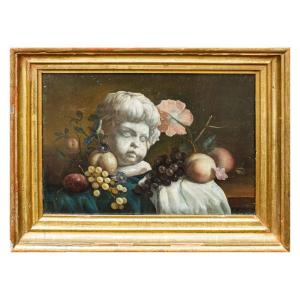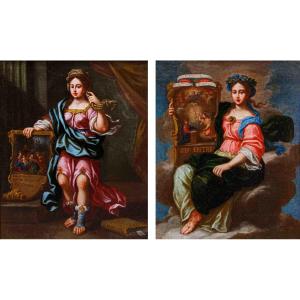Portrait of young people
Oil on canvas, cm 83 x 6
With frame, cm 87 x 67
The painting depicting a portrait of Popolano was made by an artist active in the workshop of Antonio Mercurio Amorosi (1660-1738), undoubtedly reflecting a realism of Caravaggio origin, but also obvious affinities with the Lombard naturalism and its northern contaminations. In the portrait examined there are also similarities with the works of Giacomo Francesco Cipper, known as Todeschini, given the bambocciante character of the images that Il Cipper, like Monsù Bernardo, offered in their descriptions of the humble, conditioned by a literary vein. It is a field that marked a preponderant part of the eighteenth-century Italian art, just think of Giacomo Ceruti called the Pittocchetto or Gaspare Traversi, that they produced works in which the comic tradition and social analysis came to results of extraordinary artistic validity. Student of Giuseppe Ghezzi, Amorosi worked mainly in Rome dedicating himself to religious painting (altarpieces for S. Rocco, S. Maria in Cosmedin) and genre painting. The greater fame of Amorosi is linked precisely to his paintings of "bambocciate": pictures with different formats and simple popular subjects, highly appreciated by contemporaries. Of this production, preserved in museums and private collections in Europe and still little known, we can particularly mention: the Contadinello with nest and the Contadinella with chick in the Devonshire collection in London, the Fanciullo with grape cluster in the Schleissheim Gallery, the Young man with a chalice, the Young painter and some paintings in the municipal Pinacoteca of Deruta, from the collection of the historiographer Lione Pascoli. The latter are useful for a comparison with the examined canvases, as well as the different versions of Young with jug, now in private collections.








































 Le Magazine de PROANTIC
Le Magazine de PROANTIC TRÉSORS Magazine
TRÉSORS Magazine Rivista Artiquariato
Rivista Artiquariato